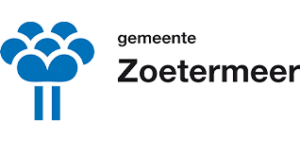Solar energy – Nearly zero-energy buildings
The city of Zoetermeer decided to fight against climate change and biodiversity loss in order to become more sustainable and greener. It set the objective of becoming a CO2 neutral City by 2040. That is why already in 2007 the first Sustainable Zoetermeer program was put in place. It includes ambitious goals with regard to climate/energy policy, healthy environment, mobility, biodiversity and sustainable purchasing. The Energy Safari project is one of the initiatives launched by the municipality within this framework.
Project in a Nutshell
During an energy safari participants walk and view different houses in their neighbourhood. During this walk, thermal images of different properties are produced. An expert explains what is shown by the thermal image concerning the loss of heat/energy at each house. This provides direct insight into the energy consumption and heat losses of the home. By subsequently tackling these heat ‘losses’, the house can be made more energy efficient and the energy bill reduced. During the safari, employees of Reimarkt, a sustainable living business, are present to answer any questions. Citizens can request a thermal image of their home for the price of €10. The municipality co-finance the production providing €40 per thermal image.
Impact & Next steps
The first pilot safari was organized in October 2013. Since then 45 safaris have been organized, with a total of 217 participating households. Each year there are 6-10 safaris in the months January to March, involving a total of about 50 participants. Every participant receives a small report by mail with the thermal image of their house and a short description. Thanks to the safari, interactions between neighbours have increased. Hopefully this will involve further uptake of house renovation and additional neighbourhoods taking part in this initiative thus fostering additional actions to renovate houses, and convince other neighbours to do likewise.
Replicability: Challenges & Success Factors
The location of the neighbourhood is important for the number of participants. The municipality discovered that in the oldest neighbourhoods with the worst isolated houses, unfortunately participation was the lowest. Adding a “fun” element can make an energy efficiency initiative more successful. The municipality managed to make its citizens more aware of their own energy consumption and is gently pushing them to act in order to reduce energy consumption.


